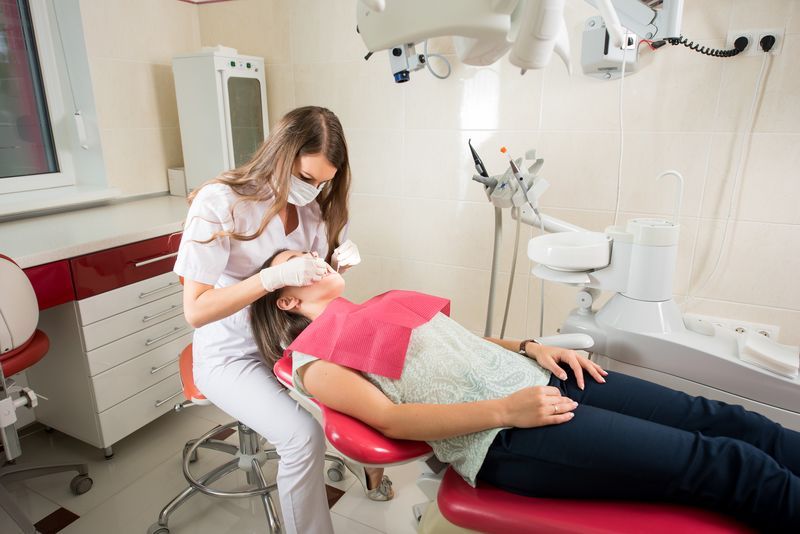Oral Health Care for Babies

Oral Health Tips for Babies
Oral health care first starts at home and at an early age. The appropriate preventative steps to prevent tooth decay in children should start before your baby cuts their first tooth. Even though your child’s baby teeth will be replaced by their adult teeth, children are still susceptible to tooth decay. When infants and toddlers get tooth decay it is often referred to as baby bottle decay. Your baby’s first teeth play an important role in ensuring their adult teeth come through correctly and unfortunately, if children get tooth decay in their baby teeth, it may have a serious impact on their adult teeth. As soon as your baby’s first tooth appears, they are risk of tooth decay (baby bottle decay). Along with routine visits to your pediatric dentist, here are a few tips to help reduce the risk of tooth decay in babies.
What Causes Tooth Decay in Babies?
There are several causes for tooth decay in babies, but it usually occurs when sweet and acidic liquids stick to your infant’s teeth. The mouth naturally has bacteria, but these bacteria will feed off of the sugars found in liquids such as milk, juice and formula, which causes the production of acids that attack the teeth. When babies drink these sugary liquids, the acid clings to their teeth and continues to eat away at the enamel. As the enamel wears away, bacteria increases, which gradually causes their teeth to decay. The risk of tooth decay in babies significantly increases when they are allowed to have a bottle while falling asleep or when children use a pacifier that is dipped in juice, honey or sugar. Saliva helps to rinse the sugary liquids from the teeth, but the amount of saliva decreases while sleeping, so the fluids remain in the mouth and on the teeth, ultimately increasing the risk of tooth decay.
Complications of Tooth Decay in Babies
Although tooth decay in babies often occurs in the front teeth (incisors), it is important to understand that tooth decay can occur in any of your child’s teeth. There are a few signs you should be aware of that indicate your child may have tooth decay, such as dark or brown spots on the teeth. As it worsens the child may experience pain and/or swelling on the gums and around the affected teeth. If your child does have tooth decay, it is important to schedule a dental appointment as soon as possible. If tooth decay is left untreated there are several complications that may result, including:
Preventing Tooth Decay in Babies
- Infection
- Crooked and/or crowded adult teeth
- Severe pain
- Chewing problems
- Difficulty speaking
- Problems smiling
- Premature tooth loss in adulthood
One of the most important steps in preventing tooth decay in babies is to be aware of their bottle feeding habits and to properly clean their teeth and gums. Some ways to prevent tooth decay in babies include:
- Don’t put your baby to sleep with a bottle of milk, juice or formula
- Avoid giving children a pacifier, especially if it has been dipped in honey, sugar water or syrup
- Don’t let toddlers play and/or walk around with a bottle of liquid, such as formula, milk or juice dangling from their mouth
- Avoid putting sugar water, soft drinks or juices in baby bottles
- Encourage drinking from a cup at about the age of six months
- Use a clean, wet cloth to wipe your infant’s gums after each feeding
It is important to keep in mind that healthy oral hygiene begins before your baby cuts their first tooth. As soon as their first tooth erupts, use a small, soft toothbrush with a small amount (amount pea size) of fluoride toothpaste to brush your child’s teeth. Begin taking your child to their pediatric dentist for examinations and cleanings about 3-6 months after their first tooth appears.
South Temple Dental is one of Salt Lake City’s top pediatric dentists. Contact us today to schedule an appointment for your child.
The post Oral Health Care for Babies appeared first on South Temple Dental.


Areas We Serve
Downtown Salt Lake City
84103, 84116, 84104, 84101, 84111, 84102, 84112, 84113, 84108, 84105, 84115, 84104, 84103
Business Hours
- Monday
- -
- Tuesday
- -
- Wednesday
- -
- Thursday
- -
- Friday
- -
- Saturday
- Closed
- Sunday
- Closed
All Rights Reserved | South Temple Dental
Dentist in Downtown Salt Lake City, Utah
